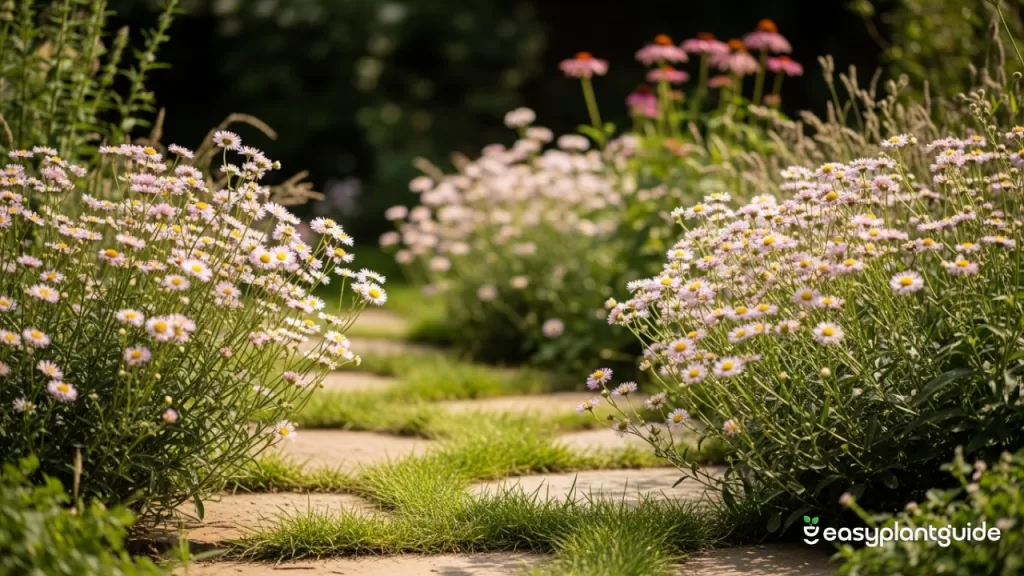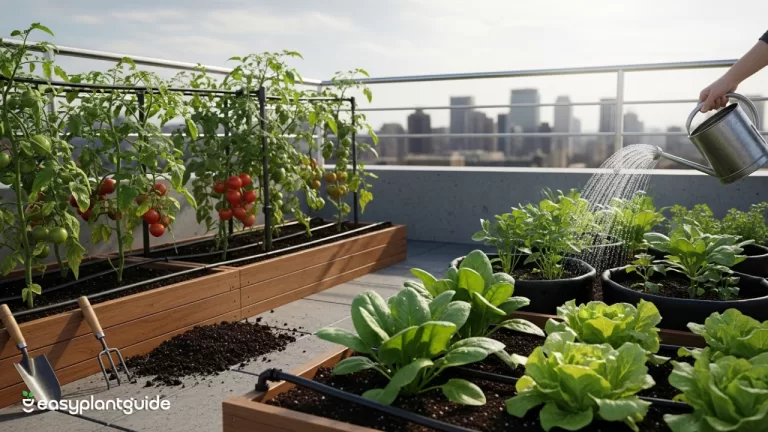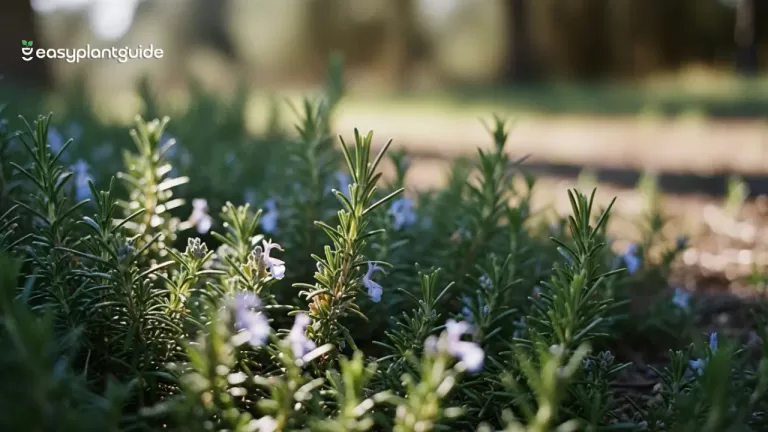Erigeron philadelphicus: 7 Amazing Facts You’ll Love
If you’ve ever wandered through a meadow or along a quiet countryside road in late spring, you’ve probably spotted clusters of delicate, daisy-like flowers swaying in the breeze. Those tiny blooms might just be Erigeron philadelphicus, better known as Philadelphia fleabane. This humble wildflower may not scream for attention, but its soft charm and ecological importance make it a hidden gem in the plant world. Let’s take a closer look at what makes this little flower so special.

What Is Erigeron philadelphicus?
Erigeron philadelphicus, commonly known as Philadelphia fleabane, is a charming wildflower that looks like a dainty daisy but carries its own unique flair. This plant belongs to the Asteraceae family—the same family that gives us sunflowers and asters. It’s often spotted growing along roadsides, in meadows, and near woodland edges, brightening up landscapes with its soft pink or white petals and sunny yellow centers. Think of it as nature’s little confetti—spreading cheer wherever it blooms!
Why Is It Called “Philadelphia Fleabane”?
The name “Fleabane” comes from an old belief that dried flowers of this plant could repel fleas. While that’s not scientifically proven, it certainly adds a fun historical twist!
The “Philadelphia” part refers to where it was first identified. So in short—it’s the flea-banishing flower from Philly!
Essential Facts About Erigeron philadelphicus
Erigeron philadelphicus, more commonly called Philadelphia fleabane, is a perennial wildflower that sometimes behaves like a biennial depending on its growing conditions. A member of the Asteraceae family—the same family as sunflowers and daisies—it’s native to North America and flourishes in a variety of environments. This charming plant prefers full sun to partial shade and typically reaches 1 to 2.5 feet in height, producing clusters of soft pinkish-white petals surrounding bright yellow centers. Blooming from spring to early summer, it adds a delicate yet lively splash of color to meadows, garden borders, and even roadside landscapes, making it a favorite among nature lovers and pollinators alike.
How to Identify Erigeron philadelphicus
Recognizing Erigeron philadelphicus is simple once you know its distinct features. The plant has slender, slightly hairy stems and a base of broad, green leaves that form a rosette close to the ground. As it grows taller, the upper leaves clasp tightly around the stem—a unique trait that helps distinguish it from similar wildflowers. Its blooms resemble tiny daisies, each with over a hundred delicate, hair-like pink or white ray florets surrounding a bright yellow center.
Native Range and Habitat
Erigeron philadelphicus is native to North America and thrives across much of the United States and Canada. You’ll often spot it brightening up moist meadows, stream banks, open woodlands, and even roadsides or disturbed fields. Its adaptability allows it to flourish in both sunny and partly shaded areas, provided the soil stays moist yet well-drained. Whether in the wild or a home garden, this plant feels most at home in naturalistic, open settings.
Life Cycle and Growth Habit
Depending on growing conditions, this wildflower can act as either a biennial or a short-lived perennial. In its first year, it typically forms a small, leafy rosette close to the ground. By the second year, a tall, upright stem emerges, bearing clusters of blooms that appear from April through June. After flowering, the plant produces fluffy, dandelion-like seed heads that catch the wind and spread easily, ensuring new plants take root nearby.
Propagation: How to Grow More of It
If you’d like to bring Erigeron philadelphicus into your own garden, propagation is simple and rewarding. The easiest method is sowing seeds directly outdoors in early spring or fall—just scatter them lightly on the soil surface and let nature handle the rest. You can also divide mature clumps every few years to rejuvenate growth and prevent overcrowding. For a truly effortless approach, allow the plant to self-seed; it readily produces new blooms year after year with minimal effort.
7 Fun Facts About Erigeron philadelphicus
There’s more to this dainty wildflower than meets the eye! Beyond its soft petals and sunny centers, Erigeron philadelphicus hides some fascinating secrets that reveal just how special it truly is.
1. A Name with Ancient Roots
The genus Erigeron comes from the Greek words “eri” meaning early, and “geron” meaning old man. This poetic name refers to the plant’s early spring blooms and its fluffy, white seed heads that resemble an old man’s beard.
2. A Flower Packed with Petals
Each bloom of Erigeron philadelphicus is made up of more than 150 thin, hair-like ray florets surrounding a golden center. This gives the flower its soft, feathery look and makes it stand out among other wildflowers.
3. A Symbol of Spring’s Arrival
These delicate flowers are among the first to appear as winter fades, signaling that spring has truly arrived. Their early blooms fill open fields and roadsides with gentle color long before most other plants wake up.
4. A Belief in Magical Protection
In ancient folklore, people once believed that fleabane could ward off evil spirits and protect homes. While that may be superstition, it shows how deeply this little flower was admired throughout history.
5. A Favorite Among Pollinators
Beyond its charm, Erigeron philadelphicus plays a vital role in nature. Bees, butterflies, and other pollinators flock to its nectar-rich blooms, making it a valuable addition to eco-friendly gardens.
6. Used in Floral Arrangements
Some gardeners and florists love using this wildflower in cut-flower displays. Its dainty shape and soft texture add a natural, rustic touch to bouquets, blending beautifully with other native blooms.
7. A Hardy Yet Graceful Plant
Despite its delicate appearance, this plant is incredibly resilient. It thrives in different soils, tolerates partial shade, and spreads naturally—proving that true beauty often comes with quiet strength.
Growing Conditions You Should Know
To keep your Erigeron philadelphicus healthy and blooming beautifully, it’s important to provide the right growing environment. This plant thrives best in moist but well-drained, slightly loamy soil that allows roots to breathe while retaining gentle moisture. It prefers full sunlight for the most vibrant blooms, though it can tolerate partial shade without losing its charm. Regular, moderate watering keeps it happy—just avoid letting the soil dry out completely. Hardy across USDA zones 2–9, this wildflower is remarkably adaptable and low-maintenance, making it a perfect choice for beginner gardeners who want reliable color with minimal effort.
5 Reasons Gardeners Love Erigeron philadelphicus
There’s a reason Erigeron philadelphicus has earned a special place in so many gardens—it’s the definition of simple beauty. Its airy, daisy-like blooms lend a natural, wild look to flower beds and borders, effortlessly softening landscapes. The flowers attract butterflies, bees, and other pollinators, turning any garden into a lively mini-ecosystem. It continues to bloom for weeks, brightening dull corners with cheerful color and movement. Easy to grow from seed, it requires little care yet delivers plenty of reward, fitting perfectly into wildflower mixes or cottage-style designs. Truly, it’s where beauty meets simplicity—a winning combination that never goes out of style.
Ecological Importance and Pollinator Value
Beyond its decorative appeal, Erigeron philadelphicus plays a vital role in supporting biodiversity. Its early-season blooms serve as an essential nectar source for bees emerging from winter, while butterflies visit for pollination and hoverflies find both food and habitat among its soft blooms. Even caterpillars of certain moth species depend on it as a food source. By planting this wildflower, gardeners aren’t just adding beauty—they’re creating a buffet for pollinators and contributing to a healthier, more balanced ecosystem.
Comparing Erigeron philadelphicus vs. Erigeron annuus
| Feature | E. philadelphicus | E. annuus |
|---|---|---|
| Stem Hair | Soft and dense | Sparse |
| Leaf Shape | Broad and clasping | Narrow and not clasping |
| Bloom Time | Early spring | Summer |
| Height | Shorter (up to 2.5 ft) | Taller (up to 4 ft) |
5 Health and Medicinal Uses (Folk Tradition)
Long before modern medicine, Erigeron philadelphicus was valued for its gentle healing properties. Indigenous communities and early settlers used different parts of this wildflower in simple herbal remedies for various ailments.
- Relieving Coughs and Colds: The leaves and flowers were brewed into a soothing tea believed to ease coughs, clear congestion, and support respiratory comfort during seasonal colds.
- Reducing Inflammation: Poultices made from the plant were applied to swollen or irritated areas, helping calm inflammation and promote relief from pain or redness.
- Acting as a Mild Diuretic: Traditional healers used the plant to encourage natural fluid balance, supporting urinary health through gentle diuretic effects.
- Healing Minor Wounds: Crushed leaves were placed on small cuts, bites, or abrasions to soothe the skin and assist the body’s natural healing process.
- Creating Gentle Herbal Tonics: Teas or extracts from the whole plant were consumed to restore energy, improve circulation, and support general wellness after fatigue or illness.
Environmental Benefits
Beyond its pretty face, Erigeron philadelphicus plays an important role in keeping the environment healthy and balanced. It’s more than a wildflower—it’s a quiet helper that supports ecosystems in subtle but meaningful ways.
- Soil Stabilization:
The plant’s fibrous roots hold soil firmly in place, preventing it from washing away during rain or wind. This makes it especially valuable for slopes, meadows, and open fields. - Supporting Pollinator Diversity:
Its delicate blooms attract a wide range of pollinators—bees, butterflies, and hoverflies—helping sustain healthy insect populations vital for ecosystem balance. - Naturalizing Disturbed Lands:
Erigeron philadelphicus grows easily in neglected or disturbed soils, making it a great choice for restoring areas affected by construction or erosion. - Reducing Erosion Along Streams:
When planted near water edges, it forms a gentle barrier that slows down runoff, reducing soil erosion and improving water quality. - Maintaining Ecological Balance:
By providing nectar, shelter, and seed sources for small wildlife, this wildflower supports biodiversity and strengthens local ecosystems.
Common Problems and Pests
While Erigeron philadelphicus is known for being low-maintenance and hardy, even this resilient wildflower can face a few minor challenges. Most of these issues are easy to spot and simple to fix with a little care.
- Powdery Mildew in Humid Areas: When humidity stays high, a white, powdery coating may appear on the leaves. Improve air circulation and avoid watering from above to keep it under control.
- Aphids on Tender Shoots: These tiny insects sometimes gather on young stems and leaves, sucking plant sap. Rinse them off with water or apply a mild insecticidal soap for quick relief.
- Slugs and Snails in Damp Spots: Moist environments attract these pests, which can chew on foliage. Use natural deterrents like crushed eggshells or diatomaceous earth around the base.
- Overwatering Issues: Too much water can lead to root rot or fungal problems. Let the soil dry slightly between waterings and ensure good drainage to keep roots healthy.
- Crowded Growth: When plants grow too closely, they compete for air and light, making diseases more likely. Thin out overcrowded patches for better airflow and stronger blooms.
5 Creative Ways to Use It in Garden Design

- Wildflower Gardens: Let Erigeron philadelphicus mingle naturally with other native blooms to create a colorful, low-maintenance wildflower patch.
- Cottage-Style Flower Beds: Pair its soft, airy blooms with classic favorites like lavender, daisies, or coneflowers for that romantic, timeless charm.
- Along Fences or Pathways: Line garden edges or fences with fleabane to add gentle texture and movement as its flowers sway in the breeze.
- Meadow-Inspired Lawns: Replace part of your traditional lawn with fleabane and other native perennials for a lush, eco-friendly meadow look.
- Pollinator Corners: Dedicate a sunny spot to attract bees, butterflies, and other pollinators who love this nectar-rich wildflower.
Conclusion: Small Flower, Big Impact
Erigeron philadelphicus might not be the star of every garden center, but it’s one of nature’s quiet treasures. Its delicate, daisy-like flowers bring early-season color, support pollinators, and require almost zero maintenance. So next time you spot these tiny pinkish-white blooms swaying by the roadside, remember—they’re not just wildflowers. They’re living reminders of how beauty, resilience, and simplicity can coexist perfectly in nature.
Explore more plant blogs and grow your green journey with us.




